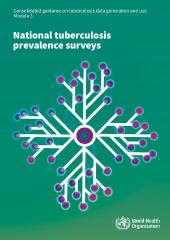Overview
National tuberculosis (TB) prevalence surveys provide a nationally representative measurement of the burden of TB disease in the population, at a given point in time. Repeat surveys allow assessment of trends and tracking of progress towards national and global targets for reductions in TB disease burden. Survey data also provide important insights that can help national TB programmes to identify ways to improve TB diagnosis and treatment.
National TB prevalence surveys are relevant in countries that do not yet have national disease notification and vital registration systems that are of sufficiently high quality and coverage to allow reliable tracking of TB disease burden.
Between 2007 and 2024, a total of 36 surveys in 32 countries that collectively accounted for more than 60% of the world’s TB disease burden in this period were implemented using methods recommended in WHO guidance (a first edition in 2007 and a second in 2011).
This third edition is intended to support national surveys implemented from 2025 up to around 2035.
The main changes compared with the 2011 edition are: major revisions to the diagnostic algorithms that are recommended, and associated case definitions; expanded guidance on data management; updated guidance on sampling design, chest radiography, clinical management, survey management, field operations and data analysis; and new chapters on testing for HIV and comorbidities, survey monitoring, comparisons with previous surveys, reporting and dissemination of results, and use of survey data.
A slide-set overview of the guidance is available here.
